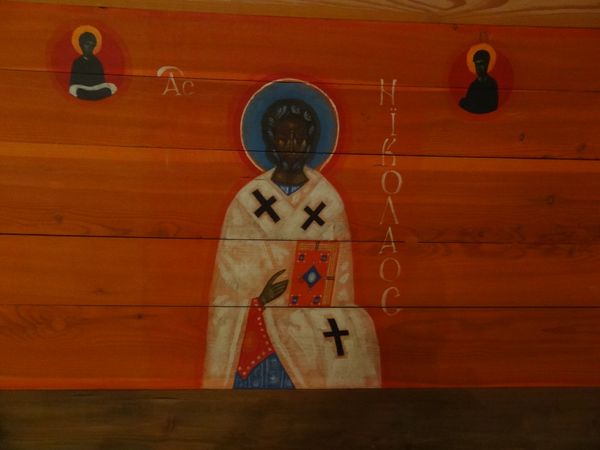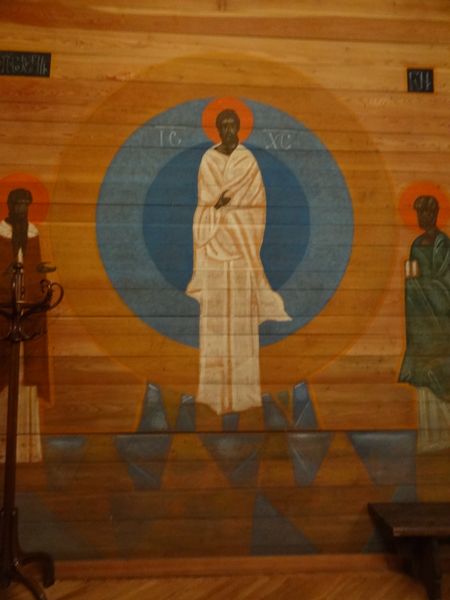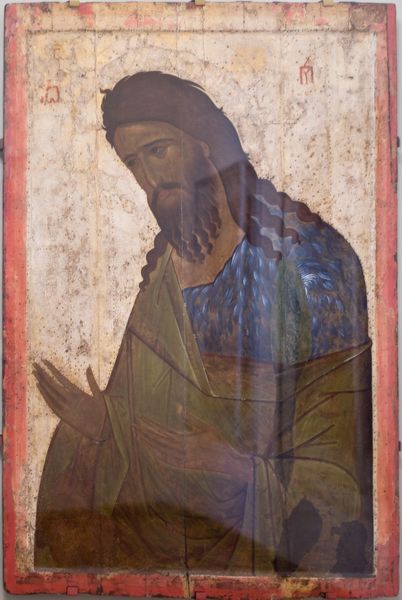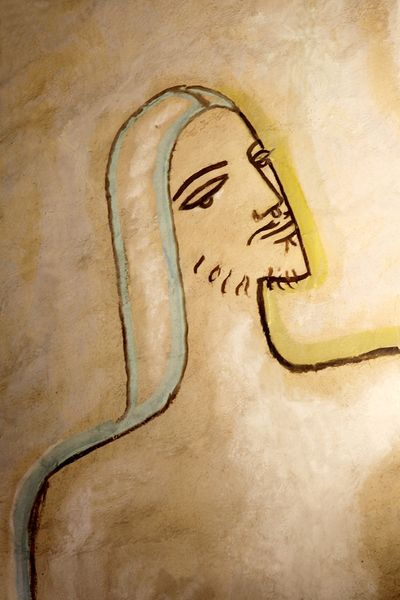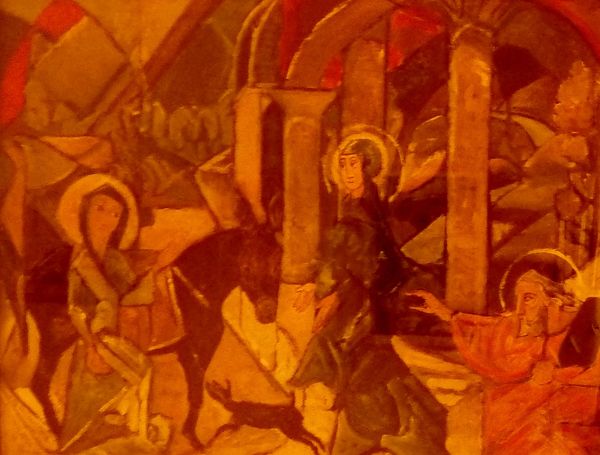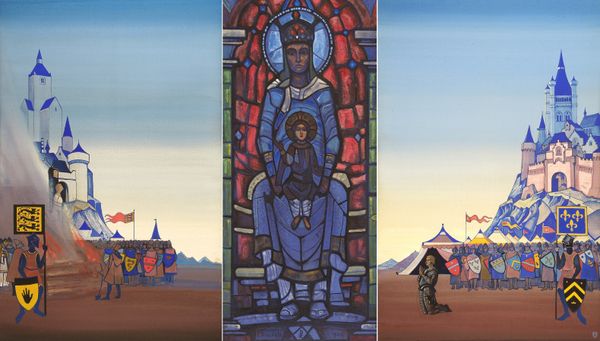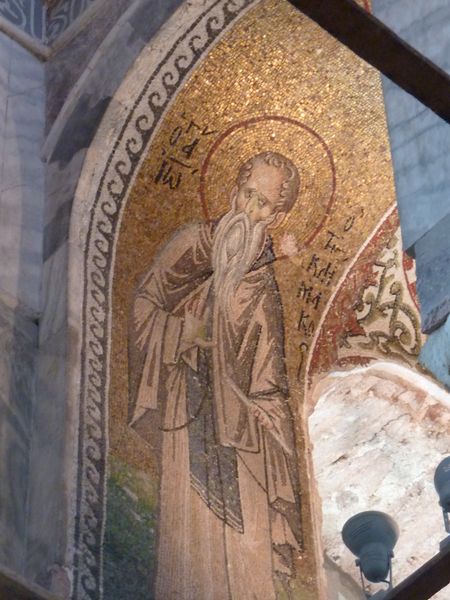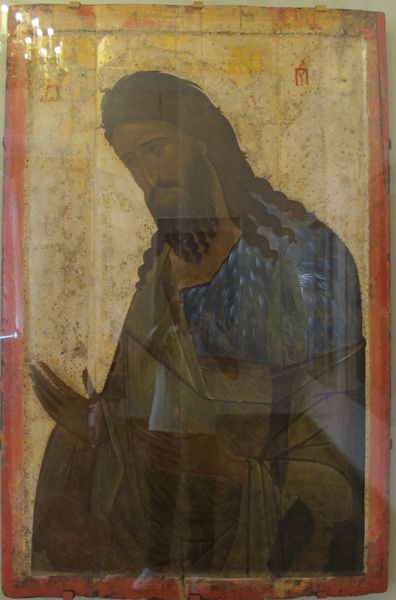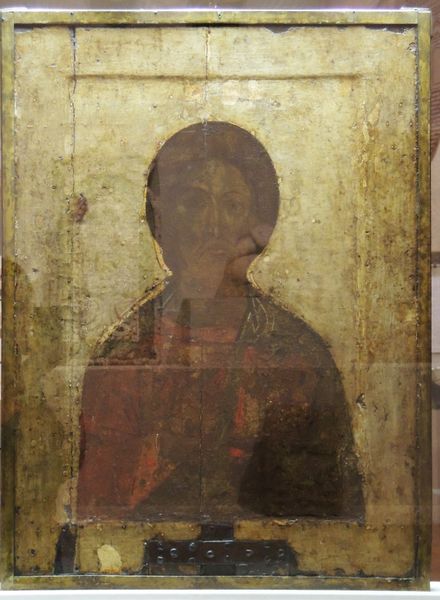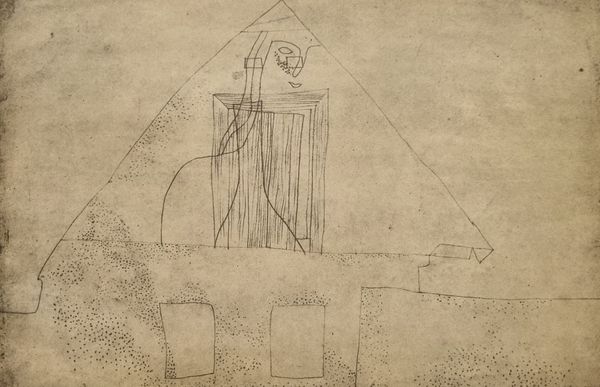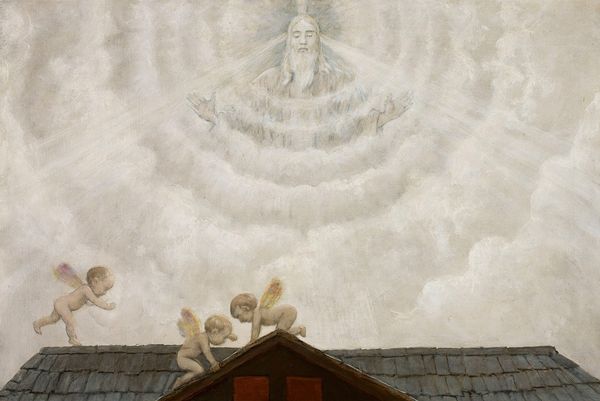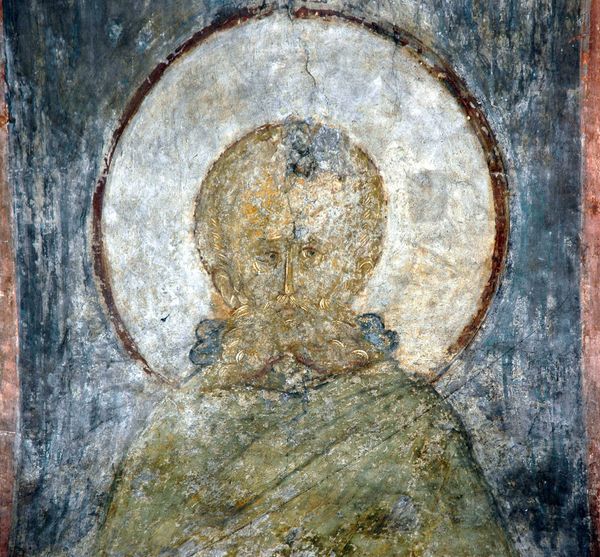
tempera, painting
#
portrait
#
byzantine-art
#
tempera
#
painting
#
figuration
#
earthy tone
#
watercolor
Copyright: Jerzy Nowosielski,Fair Use
Curator: Here we have Jerzy Nowosielski's striking rendition of "St. Paraskeva," a tempera painting rendered on wood panel. What's your first impression? Editor: The raw quality of the wood makes an immediate impression. I appreciate its rustic nature and how the horizontal lines seem to disrupt what otherwise would be a simple devotional portrait. It’s almost as if she is breaking free of a constructed, material world. Curator: Precisely! The choice of the wood is critical. Nowosielski deliberately chooses humble materials. The rough, unfinished quality of the wood makes it feel closer to folk art, thus bringing into question ideas of "high art" by situating devotional art in dialogue with everyday production. How might its textural composition intersect with our understanding of gender and labor? Editor: I see what you mean, thinking about where and who it was that harvested this material—especially in consideration of women’s work and devotional labor. In my mind, her expression, though stylized, evokes both strength and sorrow, a kind of stoic resolve familiar from many Eastern European Orthodox traditions. And in terms of labor, I see this piece opening questions about representation: Who has the authority to represent holy figures and whose visions are valued? Curator: Her black visage certainly deviates from the traditional iconography and makes me question not just the role of artistic labor, but racial identity and power as well. The red halo, so cleanly rendered, is another aspect where his unique tempera applications stand out. How do you view the political implications, considering the time period? Editor: Knowing that Nowosielski worked in post-war Poland under Soviet influence provides another layer of context, a place and time that actively worked to regulate artistic and religious expressions. By utilizing visual vocabulary and materials linked to popular culture, he creates a compelling visual and political statement about identity and cultural preservation. Curator: Absolutely. It becomes clear that even in ostensibly 'religious' art, the choice of medium and execution carries considerable political weight. His "St. Paraskeva" demonstrates that the boundaries of art extend far beyond mere representation. Editor: Yes, seeing the painting within its historical, social, and material context enriches my understanding, encouraging questions of cultural appropriation and spiritual transformation that really make the work resonant even today.
Comments
No comments
Be the first to comment and join the conversation on the ultimate creative platform.
